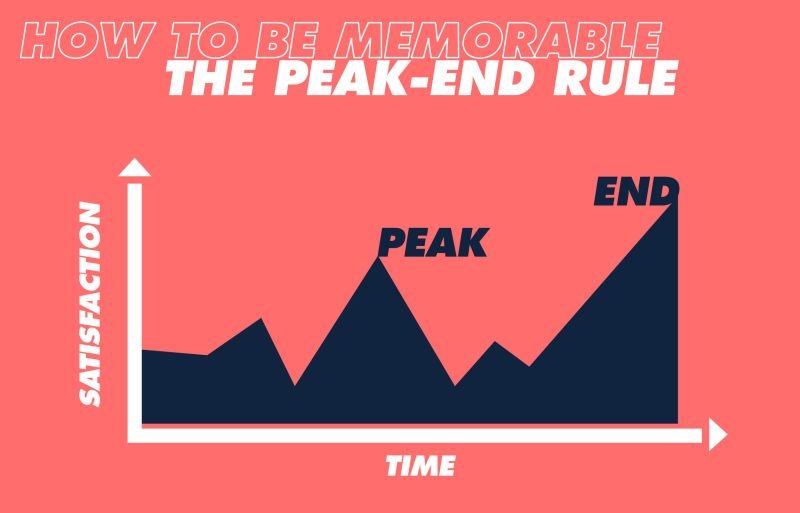Learning Nerd’s Diary #88
Welcome back Learning Nerds!
This week we talk about the elephant in every (learning) room - content!
From figuring out how to make the best content out there to reframing content & much more -
👀 Sneak peak
Here is what I have in store for you this week -
💭 Learning About Learning: Mastering Learning Content
🥜 Learning Nugget: Form Follows Function
💥 Coolest Thing I Learnt This Week:
Content is king, but context is queen
Peak-end Rule
Minimum viable content framework
🔦 Spotlight: Exploring the future of learning
Let's jump right in!
💭 Learning About Learning
Talking about learning without talking about content seems a bit impossible.
My biggest pet peeve? When those two are used interchangeably.
Learning ≠ Content
Let’s unpack this further…
🗺️ Context Matters (Who, Where & When)
Content is one part of the learning experience.
Focussing on content without looking at the entire learning experience is like serving the best Pasta in a Japanese Restaurant. Context matters!
There are 3 parts you need to think of when it comes to context - who, where & when.
Who
Consider the learner & the facilitator. Who are they? What brings them to the learning experience? What do they currently know already?
Different learners (& stakeholders) have different content needs. A professional looking to upskill has different needs than a full-time college student.
Where
Consider the learning environment. Is it a formal classroom, an online course, a workplace training session, or a casual discussion?
Different settings demand different types of content. Content that supports a teacher in a classroom is very different than the content that you might need in an online workshop.
When
Timing is everything. Is it an introduction, a deep dive, or a quick refresher?
Tailor the timing of your content according to when a learner is expected to consume that content.
🛠️ Building Content (Why, What & How)
Now that we’ve figured out how the context impacts content, let’s dissect learning content itself.
There are 3 parts you need to think about when it comes to content - why, what & how.
Why
Consider the purpose of the content. Is it there to support the teacher? Is it there to deepen understanding or unpack the application for a concept?
Asking yourself why the content is necessary and what should learners gain from it is a great way to start. Be crystal clear on your purpose.
What
Think of the curriculum you’re covering. Is it relevant for the learner? Is it applicable? What are the different smaller topics under it? What should be the sequence of those topics?
Too much to cover & your learners can be overwhelmed, too little and your learners don’t feel challenged.
How
Packaging matters! The same content can be served in various ways. From a video to a presentation to a quiz - what is the best way to engage with this topic?
Think of the pedagogy, format & media keeping all the other 5Ws in mind!
🌰 In a Nutshell
While thinking of learning content, don’t forget to think of the 5Ws & 1H:
Context
Who: Learner + Facilitator
Where: Learning Environment
When: Timing
Content
Why: Purpose
What: Curriculum + Complexity + Sequencing
How: Pedagogy + Medium
🥜 Learning Nuggets
Form follows function.
Content follows context.
💥 Coolest Thing I Learnt this Week
Content is king, but context is queen
Ross shared one of my favourite analogies on content!
Just like in chess, where the queen is essential for thoughtful and calculated moves, context gives content purpose and direction. So, just as a king needs a queen to make meaningful moves, content needs context to make a meaningful impact.
Peak-End Rule
Gary Stringer had this amazing post which talks about one thing to do while designing learning content -
Focus on a really strong conclusion.
Minimum Viable Content Framework
Dr Philippa Hardman, talks about a super interesting framework to break away from our ‘content addiction’.
Here is how you can build your own:
Step 1 Diverge: what would amazing content look like for this learning experience?
Step 2 Converge: what would this learning experience look like if we didn’t create any content at all?
Step 3 Decide: what is the Minimal Viable Content required for this learning experience to hit its outcomes?
🔦 Spotlight
I spent one evening this week brainstorming on the future of learning with the lovely folks at Offbeat.
We answered 4 questions:
What are the factors that influence the change in how people learn and how L&D operates?
What do we envision as the fundamental purpose of learning in our rapidly changing world?
How might the role of educators and trainers evolve in the coming years, and what support will they need?
What are the challenges and enablers of the change?
If you’re curious to unpack the future of learning together, I’d love to chat! Reply to this and let’s catch-up :)
Love & Learning
What I hope you’re thinking after reading this newsletter -
You can get this directly in your inbox!






